

|
Back to |
| The Front Page |
| People |
|
Bob Alman's Croquet Memoir Part One: 1939 to 1975 |
||||||||||
|
Writing and photos courtesy of Bob Alman
|
||||||||||
|
||||||||||
Bob Alman recently realized that people--interesting people, important people, people who had seen and done significant and memorable things in the sport--are just waiting to be asked to write their own memoirs. It might have started with John Prince, because it was Bob who proposed the three-part project to him, as well as the recent article pairing John's art with recollections of people, places, and events. As an exercise, he decided to write his story as if told by someone else, third-person style. This distancing from the material miraculously allowed all the juicy parts to stand out, absent a lot of righteous mental static. It was useful to notice that in a "croquet memoir" you don't need to include anything except croquet and all the circumstances and happenstances that made the croquet happen. We cannot predict the date of the next installment, though he has promised to continue. This is Part One.
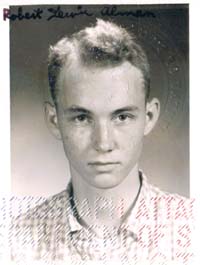
|
Grandma Alman was the soul of kindness and generosity except when she was holding a croquet mallet. Probably the only reason he remembers those early games with his grandmother is because she never let him win. The two of them would play on a fast and grassless surface between the back of the house and the barnyard. He couldn't recall the rules used, but he could never forget the glee with which, whenever she could, she "sent" his ball a long way frequently all the way to the pump house.
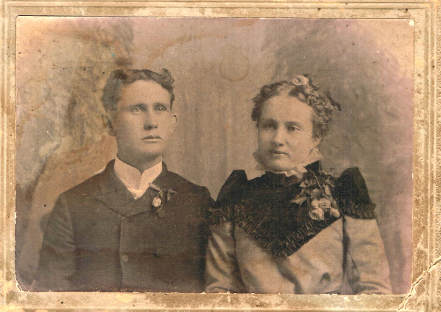
|
| In 1898 the woman who would teach Bob Alman to play croquet in the mid 40's married Dr. Samuel Alman in Melvin, Alabama. |
Maybe that's how Bob Alman began to learn, early on, the difference between "reality" and a game. He was fond of lecturing the students in the free Saturday morning Public Croquet classes he taught for more than 35 years, off and on, in San Francisco and in West Palm Beach, "In this game, you should never hesitate to kill with impunity. There's no excuse for pretending compassion in the most cruel game ever invented - cruel because you have time to explain with malice aforethought exactly what you're going to do to your opponent....and then you should deliberately over-play your enjoyment of the suffering you're causing, moment by moment!"
Relishing the cruelty of the game
He would deliver this speech with harsh insistence, to make sure they were paying attention. Sometimes he would add, "It's true that life is often unfair, but you must always realize that perfect justice is universal in croquet. So you can kill your opponent gleefully - that's half the fun-- because you know everybody is going to resurrect at the end, before the next game." He enjoyed using the word "resurrect," knowing it would register strongly with the Christians in the group.
"And in exactly the same dynamic, you will know that you deserve everything that happens to you in this game, good or bad!"
Inevitably, early on in a novice game, there would be an occasion for his own mock-cruelty as the Golf Croquet instructor, when he would shout after a novice who had lightly cleared an opponent ball near the hoop. "That wasn't a murderous stroke, it was a love-tap! Haven't you read the scriptures: Now you're going to have done unto YOU what you SHOULD have done unto HER!"
 And the opponent would duly and deliberately enact his just revenge, sending the opponent ball over a distant boundary with a joyous jab. From that point, everyone in the game would have certified permission to be excessively cruel, and to enjoy the deadly things they would do to their opponents.
And the opponent would duly and deliberately enact his just revenge, sending the opponent ball over a distant boundary with a joyous jab. From that point, everyone in the game would have certified permission to be excessively cruel, and to enjoy the deadly things they would do to their opponents.
According to him, there was general consensus that Alman was an effective instructor of novices - partly because he enjoyed it, and he enjoyed it because he thought he did a really good job in that role. He sincerely believed that the fun of croquet came largely from the deliberate cruelty one could with impunity practice (or on the other side of it, experience) and relish, precisely because it IS a slow game.
Having to earn a living
Alman had not done any serious work of any kind until he was 26 years old in San Francisco and decided it was time to get serious about a career. He chose publishing because people told him he was good at writing. The interview was with the vice president of W.A. Benjamin, Inc., in a suite at the Fairmont Hotel on Nob Hill. He walked in and met Harvard-educated Peter Dickenson, who offered him a seat opposite him at a table near the window. John Barth's GILES BOAT-BOY was on the table, with a book-mark sticking out of it. That was Bob's cue to comment that he considered it overwrought and not nearly as much fun as Barth's SOT-WEED FACTOR, or even the FLOATING OPERA.
Having thus proved he could easily chat with college professors in the course of persuading them to adopt the science textbooks of this most prestigious publisher, he got the job.
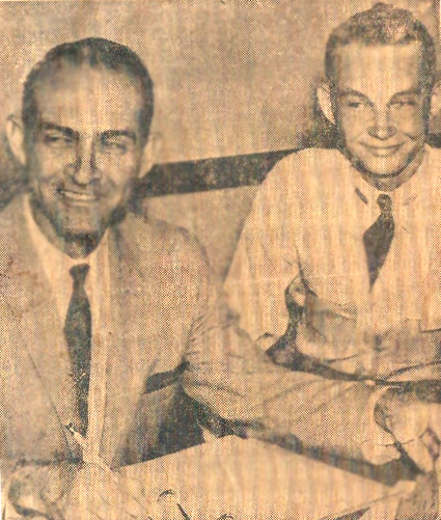
|
| He was called "Lewis" by his family and didn't become "Bob" until given by-lines in college journalism. He's on the right in the county newspaper, looking like the teen-age smartass he actually was, having collected donations for the Ole Miss band to go to the World's Fair in Brussels in 1957. |
Less than two years later, Alman had become a book editor in Manhattan, with an office on the 11th floor of South Park Avenue #1, overlooking the place where the tunnel under Grand Central Station emerges. His secretary was right outside the door, as were all the secretaries of all the editors, lined up in an el-shaped configuration of offices for the president, vice-president, and five editors. No form of Women's Liberation had reached Manhattan, or at least this quarter of it, nor Madison Avenue just a block away.
The strange office culture of the 60's
Alman should have noticed the unnaturalness of this situation, he later thought. After all, having grown up in the Deep South in the 50's in the ultimate "closed society," he had noticed at age 13, on his own and all of a sudden, how badly the whites were treating the blacks, he among them. (He had sold a refrigerator in his father's store to a prominent local black man and in his excitement had reached for the man's hand to shake it. His father had later told him later, solemnly, "Son, we don't do that here.")
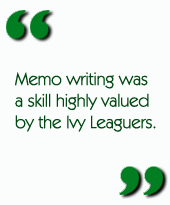 Bob himself was a huge exception in this New York publishing firm: Every other editor as well as the president and the vice president all held degrees from Harvard, Yale, or Princeton. After a stint as editor of some science reference books, Alman was elevated to the editorship for math, physics and the biological sciences, having graduated Louisiana State University with no math, physics or biology credentials and a bachelors degree in journalism. (Given the choice, he had studied philosophy instead of math or physics.)
Bob himself was a huge exception in this New York publishing firm: Every other editor as well as the president and the vice president all held degrees from Harvard, Yale, or Princeton. After a stint as editor of some science reference books, Alman was elevated to the editorship for math, physics and the biological sciences, having graduated Louisiana State University with no math, physics or biology credentials and a bachelors degree in journalism. (Given the choice, he had studied philosophy instead of math or physics.)
All his equals as editors were male and all their secretaries were bright and attractive young women wearing mini-skirts. That's what professional life in Manhattan looked like in the late sixties.
In fact, Bob's writing and editing experience put him on a level at W.A. Benjamin with his Ivy League cohorts because he could not only converse with professors, he could also write a good memo - a skill the Ivy Leaguers valued highly.
Learning what work is and how to do it
Alman later realized that he didn't do a great job as editor at W.A. Benjamin, but what he did do there is learn about work: What it's about, how to organize it, and how to point it toward specific results, in time.
As it happens, the founder of W.A. Benjamin had conceived of the editorship in a broader sense as a "product manager," responsible not just for signing a book with the right professor - preferably a Nobel Prize winner---but also for overseeing the design process, including the cover art and title; and accepting ultimate responsibility for the fate of the book in the marketplace; that would include, almost inevitably, signing in the second year of publication a lower-level professor who could write new sentences and paragraphs for a revised edition to introduce to the market two or three years later which could convincingly be promoted as a vastly improved product, still with the Nobel prize winner's name leading the list of authors.

|
| The originals have been lost, but this accidental collage includes two photographic portraits from the college years on top of the official high school graduation class pic. |
In the course of being promoted to the editorship, Alman learned an important lesson from Bill Benjamin himself. He had confessed to Benjamin early on that he knew nothing about science. Benjamin had responded, wisely and memorably, "That's good. Because you won't make a fool of yourself talking about matters you will need to rely on your consultants to guide you through. You'll concentrate on the writer's reputation in the academic community and how you can encourage him to get the book written, how it fits into the academic curriculum, what is different and special about it - other than being written by a Nobel laureate - and how you're going to sell it for him and for us and get it adopted by a lot of departments in a lot of universities."
What a great lesson - very close to life-changing! He would seldom be tempted, thereafter, to stray very far from the big-picture imperative of Getting the Job Done.
Alman always felt he had a knack for pairing words and images. But his big accomplishment at Benjamin was actually learning HOW TO WORK - not just to do things, but to be accountable for getting useful things done in a timely and efficient way within the larger context of the company's mission. (This orientation to work was surely to figure into his attraction to Werner Erhard & Associates, later, in San Francisco. He would say that it made a difference in all his croquet achievements as well.)
But the dream job in Manhattan disappeared suddenly on a spring morning several years later when the founder and president appeared at the office to announce that he had sold the company to Addison-Wesley, they were moving it to Boston, and everyone was fired with two weeks notice and pay, except for the bookkeeper.
A therapeutic game of croquet in Central Park
All the editors were gob-smacked. How could this happen? They were doing so well. (The company WAS doing well, and that's exactly how such a profitable sale could happen!) So after Bill Benjamin left the office that morning, the editors and the vice-president held a late-morning meeting around the conference room table, and the looming question, for all of them was, "What do we do now?"
A vast silence fell over the room, among the six forlorn figures around the conference table. It stretched out so long that finally, Alman blurted out "Let's go to Central Park and play croquet!"
What? That took a moment or two to sink in. But in the absence of any other good ideas that made sense, the idea took hold and quickly gathered force. Alman had seen two toy croquet sets in the office of his chief math consultant, Professor John Hauser at NYU. They could be borrowed. And they could all play on the Sheep Meadow in Central Park. Alman could meet them there with the croquet sets after lunch.
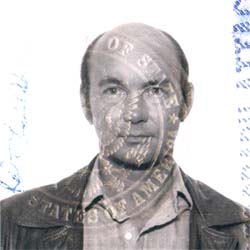
|
Alman remembered the primitive game very well - not the rules, just setting up and playing - because not long after they started, a roving reporter from one of the network TV stations came along with a cameraman, looking for items on a slow-news midweek.
"What are you doing?" was a reasonable question for a bunch of adult males fully dressed for the office holding little mallets and stalking little balls.
"Croquet."
"Why are you doing that?" was the next question.
"Because we've all been fired and our company is moving to Boston." we told the reporter.
The answers were good and easy to understand, with a particular resonance in New York at that time, going through a mini-depression, especially in publishing and advertising. Their strange game got almost a full minute on the local evening news.
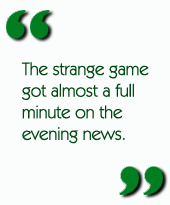 Alman tried free-lancing for a while, and that was sufficient for the income needed - he had waggled a spectacular rent-controlled deal on a fifth-floor two-bedroom place on East 84th Street, so the living was easy. He had a very good grand piano and had memorized a dozen or more Scott Joplin rags. But BEING in Manhattan wasn't fun any more, because he quickly noticed what everyone else knew: that in Manhattan, who you are is what you do.
Alman tried free-lancing for a while, and that was sufficient for the income needed - he had waggled a spectacular rent-controlled deal on a fifth-floor two-bedroom place on East 84th Street, so the living was easy. He had a very good grand piano and had memorized a dozen or more Scott Joplin rags. But BEING in Manhattan wasn't fun any more, because he quickly noticed what everyone else knew: that in Manhattan, who you are is what you do.
Obviously, he would need to move back to San Francisco, where as everyone in this era also understood, it was okay to just BE--without any particular academic or professional role.
How to achieve enlightenment in Manhattan
But before he would act on that realization, the most important thing to happen to him in New York would largely set the course for the rest of his life. He describes it to himself as becoming enlightened. The main aspect had been a two-weekend course in a hotel ballroom with 200 other people called The est Training.
His secretary had noticed a positive change in him and had taken the course herself. So both of them were without jobs. Bonnie could have gotten another job easily. But Alman made a suggestion that appealed to them both: Why doesn't he move back to San Francisco and rent a big place they could share?
It was done. The place was a huge flat on Ashbury Street, just a block and a half up the hill from Haight Street, with a cityscape view from both the front and the back.
Alman happily free-lanced in San Francisco, and even though it included lots of "temping," the living was cheap and easy at the time, and there was no stigma for guys in their mid thirties with no noticeable career.
As for Bonnie, she had quickly immersed herself in est as a volunteer in San Francisco, world headquarters for the organization. She soon attracted the attention of Erhard himself, who hired her as his project manager.
Alman himself had no interest in doing serious work for that organization, popularly considered a cult. The est training had been great, he and others saw the benefits, but he never imagined himself doing that kind of work. The product wasn't snake oil, but the only way "enlightenment" could be sold in that period resembled the selling of snake oil, so he was sure he would never do something like that.
However, it came to pass that in November of 1975, Bonnie asked if they could have the est staff party at their huge flat, because there was nothing planned for the staff, which was soon to move to a new and larger headquarters downtown, on the east-facing slope of Nob Hill.
Yes, of course they could do that, Bob said. So 30 or 40 people crowded into their flat to consume three turkeys and fixings on Thanksgiving Day of 1975, and among the partiers was one Mike Orgill. Mike says he remembers being introduced to Bob as the host, chipping ice in the kitchen. What Bob remembers most about the party--except for meeting Mike--was getting the lights back on several times at the circuit breakers when all cooking for the est mob plunged the place into darkness.
A casual job in San Francisco
At some time during the party, Mike told Bob he had been living in Manhattan pursuing a career as a science fiction writer and had just published a biography of the Carter Family country music group. He had taken the est Training and was hired, along with two others, to write Werner Erhard's book MAKING LIFE WORK. Prentis-Hall had already given Erhard a $50,000 advance.
They needed one more writer, mostly to listen to Werner's talk at various events and to edit it into publishable material. Mike was going to start next week, at the back of the fourth floor of the new six-story international headquarters downtown on California Street. "Why don't you apply?" Mike said, when Bob had described his own professional background.
Why not? Alman did apply, and he got the job, which was intended to last about six weeks. It lasted much longer than that, and in the course of doing that fascinating work, Mike and Bob became friends and co-conspirators in many pass-times, which they took seriously. They laughed a lot in the course of planning and carrying out psychedelic adventures as structured, purposeful events. They co-invented a perfect form of croquet, and played it regularly, seriously and hilariously with mutual friends, including Mike's wife Helen.
Without knowing it at the time, Bob and Mike, through a string of happenstance that in retrospect looks absolutely random and miraculous, had both discovered the central preoccupation that would channel much of the rest of their separate lives: Croquet.
Bob Alman has organized and managed several large and successful clubs, including the San Francisco Croquet Club and the National Croquet Center. He has written the three-volumn MONOGRAPH SERIES ON CLUB BUILDING, ORGANIZATION AND MANAGEMENT for the Croquet Foundation of America. He put online the original USCA website www.CroquetAmerica.com in 1996 and managed it for ten years. Also in 1996 he created this magazine as the only global independent voice of the sport. He hopes this example of memoir in a third-person omniscient voice will be an inspiration to other potential memoirists in the croquet world, following in the keystrokes of John Solomon, John Prince, and (soon to come) Neil Spooner.